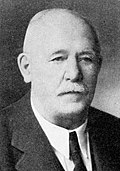| |||||||||||||||||||||
| |||||||||||||||||||||
 County results Goodland: 30–40% 40–50% 50–60% 60–70% 70–80% Berquist: 40–50% 50–60% 60–70% Brophy: 40–50% | |||||||||||||||||||||
| |||||||||||||||||||||
| Elections in Wisconsin |
|---|
 |
The 1942 Wisconsin lieutenant gubernatorial election was held on November 3, 1942. Incumbent Walter Goodland was re-elected to another term, defeating Progressive Henry Berquist and Democrat John Brophy.
Contents
- Republican primary
- Candidates
- Results
- Progressive Primary
- Candidates 2
- Results 2
- Aftermath
- Democratic primary
- Nominee 3
- Results 3
- Other party nominations
- General election
- Results 4
- Notes
- References
- Bibliography
This race was notable due to the death of governor elect Orland Steen Loomis, and the ensuing court battle over who would hold office in his stead. The Wisconsin Supreme Court ruled that Lieutenant Governor Walter Samuel Goodland would be acting governor for the duration of Loomis' term, overriding the view of incumbent Governor Julius Heil that he should continue his term in office.


